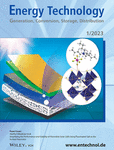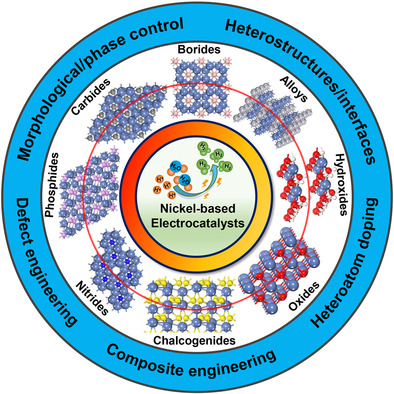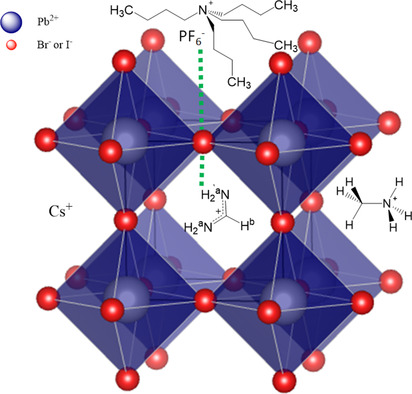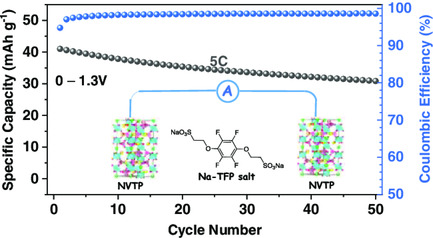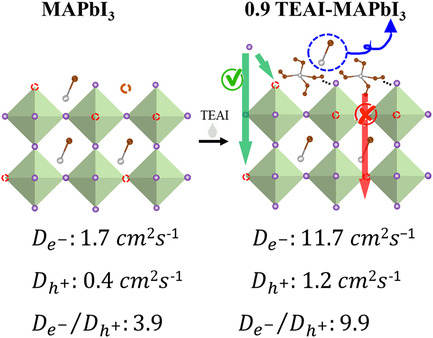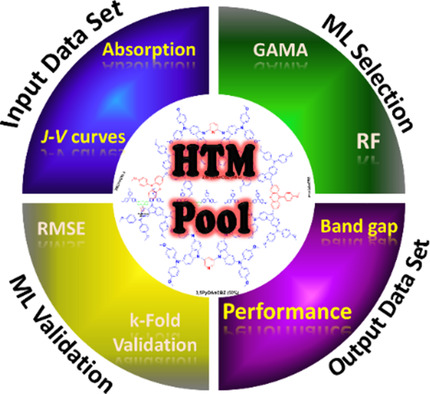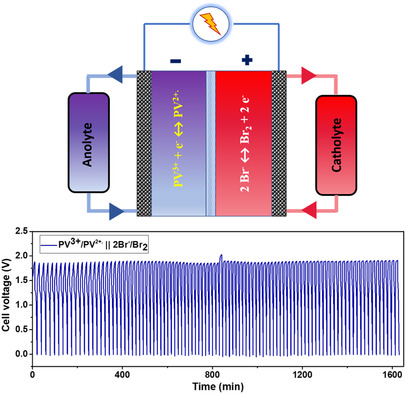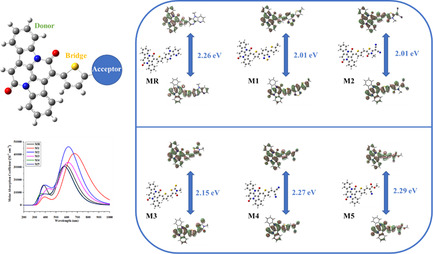Journal list menu
Export Citations
Download PDFs
Cover Picture
Amplifying the Performance and Stability of Perovskite Solar Cells Using Fluorinated Salt as the Surface Passivator
- First Published: 06 January 2023
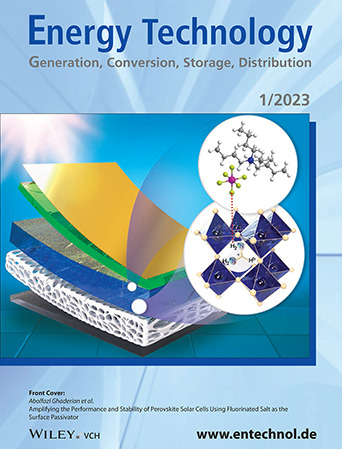
A simple passivation strategy using a common fluorinated salt is reported that seeks to enhance the photovoltaic performance and long-term stability of halide perovskite solar cells. Tetra-n-butyl ammonium hexa-fluorophosphate is used as a passivating agent to mitigate the surface defects on the perovskite and impede the ion mobility by virtue of H-bonding. In addition, the presence of fluorine atoms causes strong hydrophobicity, which in turn improves the moisture stability in perovskite solar cells. More details can be found in article number 2200211, Samrana Kazim and co-workers.
Back Cover
Synthesis and Application of an Aromatic Sulfonate Sodium Salt for Aqueous Sodium-Ion Battery Electrolytes
- First Published: 06 January 2023
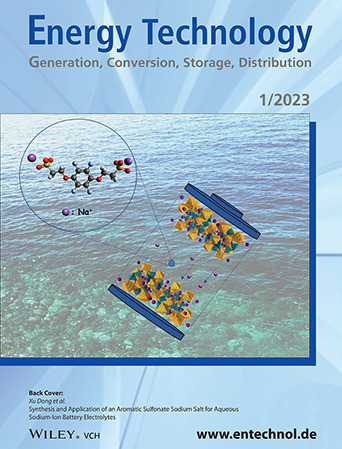
A new aromatic sodium salt, sodium (2,3,5,6-tetrafluorophenoxy) diethane sulfonate, bearing two sodium sulfonate groups is designed, synthesized, and characterized for application in water-based Na-ion batteries. The aqueous solution of the salt provides high ionic conductivity, suitable electrochemical stability and good cycling stability of Na-ion batteries, triggering new ideas for the development of water-based Na-ion battery electrolytes. More details can be found in article number 2201045, Stefano Passerini, Dominic Bresser, and co-workers.
Masthead
Editorial
Perspective
Lithium-Ion Battery Thermal Management Techniques and Their Current Readiness Level
- First Published: 12 October 2022
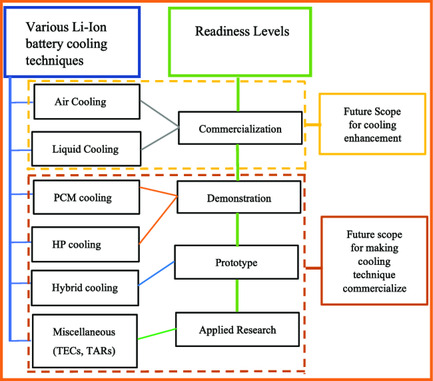
The primary goal of this study is to enlighten readers on the current status of various battery thermal management techniques and highlight any novel approaches being used by the researchers to improve these techniques. The merits and demerits of these techniques along with future needs and opportunities in this field have also been discussed.
Reviews
Research Development in the Traditional Methods and Water Flow Erosion for Natural Gas Hydrate Production: A Review
- First Published: 10 November 2022
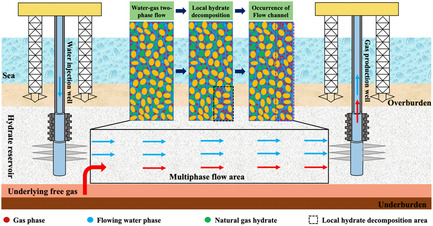
Herein, the research advances, application potential, and limitations of hydrate production methods, including four traditional and novel water flow erosion methods, are reviewed. The combination of water flow erosion and traditional hydrate production methods can be expected to achieve the promising long-term performance of hydrate production, which is theoretically and practically significant to study commercial hydrate production.
Enhanced Surface Charge Density of Nanogenerators by Small Molecules: A Review
- First Published: 18 October 2022
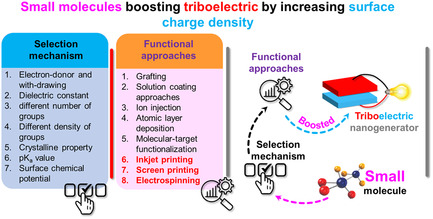
Through a variety of surface and bulk manufacturing processes, small molecules can be integrated and infiltrated into triboelectric layers. This thorough review outlines the background, selection criteria, and fabrication processes for small-molecule-based triboelectric nanogenerators, which are designed to increase the density of the triboelectric surface charge and effectively capture mechanical energy.
Recent Progress of Anode Protection in Li–S Batteries
- First Published: 10 November 2022
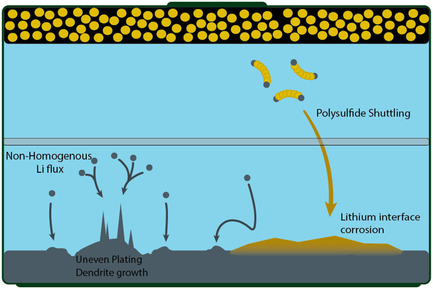
This review provides an overview of the challenges facing lithium–sulfur batteries. A comprehensive overview of lithium metal protection strategies is provided including electrolyte optimization, construction of artificial solid electrolyte layers, utilization of hosting materials, and design of separator, as well as a theoretical understanding and analysis of the underlying methods.
Recent Advances in Ni-Based Electrocatalysts for Hydrogen Evolution Reaction
- First Published: 03 November 2022
Research Articles
Amplifying the Performance and Stability of Perovskite Solar Cells Using Fluorinated Salt as the Surface Passivator
- First Published: 15 November 2022
Synthesis and Application of an Aromatic Sulfonate Sodium Salt for Aqueous Sodium-Ion Battery Electrolytes
- First Published: 21 October 2022
The Ethanol–Ethyl Acetate System as a Biogenic Hydrogen Carrier
- First Published: 12 October 2022
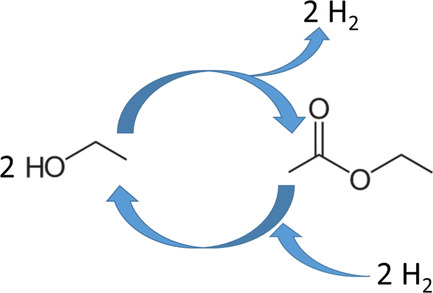
Reversible conversion of ethanol to ethyl acetate is an attractive method for hydrogen storage. The reaction releases hydrogen and can be reversed catalytically for hydrogen uptake. The approach enables safe and dense storage utilizing a nonfossil carrier. This study provides insight into energy efficiency, ecobalance, and reaction thermodynamics of the process.
Differentially Accelerated Electron and Hole Diffusion in MAPbI3 Film Surface Treated by a Quaternary Ammonium Halide for High-Efficiency Solar Cells
- First Published: 18 October 2022
Two-Step Dealloying Approach to Synthesize Hierarchically Porous Nickel–Tin Alloy Toward Long-Life Lithium-Ion Batteries
- First Published: 13 October 2022
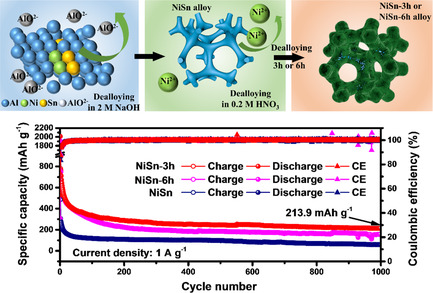
The NiSn anode with interconnected ligament-channel networks and nanowalls is fabricated by two-step dealloying, involving corrosion of an Al97.5Ni2Sn0.5 precursor in NaOH and subsequent etching of Ni in HNO3. The NiSn-3h electrode presents excellent cycling stability with a reversible capacity of 213.9 mAh g−1 at 1 A g−1 after 1000 cycles.
Overall Water Splitting Under Visible Light Irradiation Over Ir and A-Codoped KTaO3 (A=Ca, Sr, Ba, La) Photocatalysts
- First Published: 14 October 2022
Automated Machine Learning Approach in Material Discovery of Hole Selective Layers for Perovskite Solar Cells
- First Published: 18 October 2022
A Hybrid Plasma-Catalysis System for CO2 Hydrogenation over Perovskite-Type Catalysts: Promoting Effect of A-Site Substitution
- First Published: 18 October 2022

The hybrid dielectric barrier discharge plasma-catalysis system using LaNiO3 as catalyst is effective to activate CO2 hydrogenation. The substitution of partial La with A' in LaNiO3 promotes CO2 conversion and C2–4 selectivity. The smaller particles size of Ni0 and more oxygen vacancies in La0.8Ca0.2NiO3±δ contribute to its superior performance.
Lithium Difluoro(Oxalate)Borate-Induced Interphase for High-Voltage LiFe0.15Co0.85PO4@C Cathode by Solid-State Synthesis
- First Published: 18 October 2022

Herein, a solid-state synthesis of LiFe x Co 1−x PO4@C (X: 0.15) is reported, which is used as a cathode for lithium-ion batteries. The use of lithium difluoro(oxalate)borate as an electrolyte additive takes part in the formation of a stable solid electrolyte interphase layer, hence improving the electrochemical stability.
Fabrication of Symmetric Polyaniline/Nano-Titanium Dioxide/Activated Carbon Supercapacitor Device in Different Electrolytic Mediums: Role of High Surface Area of Carbon and Facile Interactions with Nano-Titanium Dioxide for High-Performance Supercapacitor
- First Published: 03 November 2022
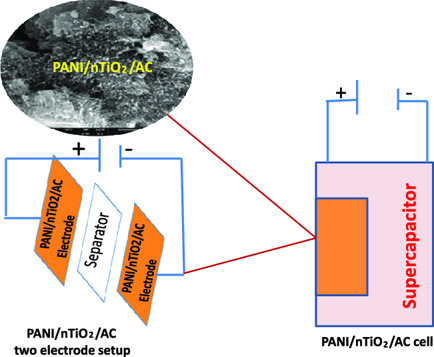
The fabricated electrode cell of polyaniline/nano titanium dioxide/activated carbon (PANI/nTiO2/AC) has a well-interconnected network and is thermally stable in aqueous H2SO4 electrolyte. The device can reach a specific capacitance ≈827 F g−1 at 10 mV s−1 since it provides large effective surface area for the electrolyte ions to penetrate inside the electrode material.
Highly Stable Asymmetric Viologen as an Anolyte for Aqueous Organic and Halide-Based Redox Flow Batteries
- First Published: 10 November 2022
Performance Analysis of a Novel Water/Electricity Cogeneration System Based on Plasma Waste Gasification and a Small Modular Reactor
- First Published: 03 November 2022
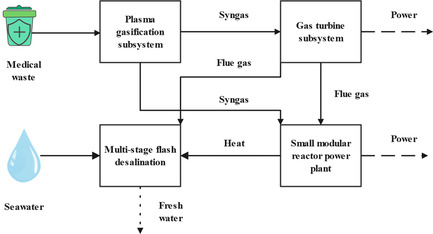
A hybrid system consisting of plasma gasification, multistage flash desalination, and a small modular reactor power plant is proposed for power and water cogeneration. The energy efficiency of medical waste reaches 52.88%. In just 3.7 years, the initial investment is recouped, and in its 20 year lifetime, the system achieves a net present value of 430036.07 k$.
Lithium Fluoride Assisted Preparation of High-Performance All-Inorganic CsPbI3 Perovskite Solar Cells
- First Published: 10 November 2022
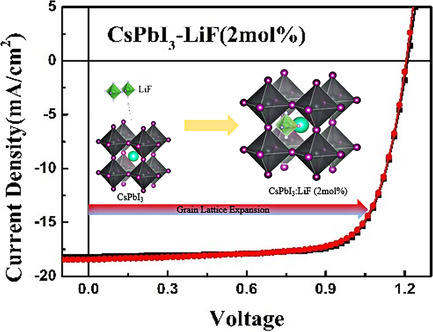
Lithium fluoride as an inorganic ionic dopant can control grain growth and get larger grain sizes. The doping of 2 mol% LiF considerably enhances the performance of all-inorganic perovskite solar cells, eliminates the hysteresis effect of the device, and the maximum power conversion efficiency of perovskite solar cells is raised to 17.02%.
Preannealing Process Improves the Efficiency of CsPbIBr2 Perovskite Solar Cells
- First Published: 05 November 2022
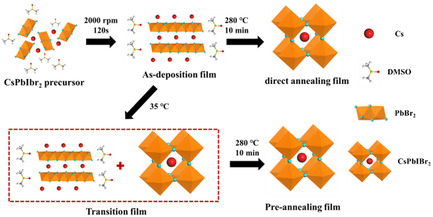
A simple preannealing method is used to obtain CsPbIBr2 perovskite films with uniform morphology, strong crystallinity, and free pinholes. The performance of the device can be effectively improved due to the reduction of defects and the optimization of the contact between functional layers. Therefore, a power conversion efficiency of 9.6% is obtained, which is nearly 100% improvement compared with that of the controlled device.
In-Depth Analysis of Electrochemical Reaction Rate Distribution in Microfluidic Fuel Cell with Flow-Through Electrodes
- First Published: 10 November 2022
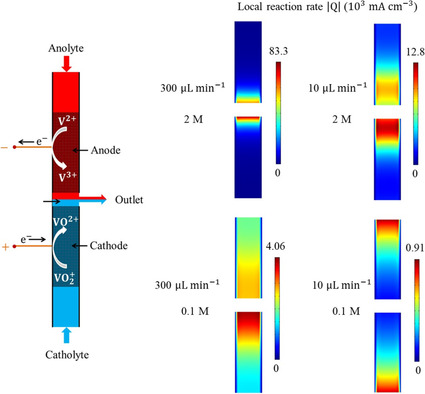
Herein, systematic analyses of the reaction rate distributions under various operating conditions are performed, in-depth understandings of the reaction rate distribution mechanisms are presented, and based on the results, a series of performance enhancement strategies is proposed and examined for the future design of microfluidic fuel cells under various application phenomena.
Preparation of F and N Co-Doped Fe–N–C Catalyst and Evaluation of its Oxygen Reduction Performance
- First Published: 09 November 2022
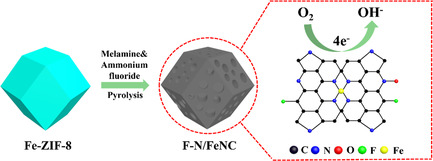
The problems of underdeveloped pores and high electrochemical impedance of oxygen reduction reaction (ORR) catalysts need to be urgently addressed. Heteroatoms F and N are doped on precursor Fe-zeolitic imidazolate framework (ZIF)-8 to increase the activity of Fe-ZIF-8-derived porous carbon materials and a noble metal-free high-activity ORR catalyst F–N/FeNC with 3D interconnected porous structure and high conductivity is successfully prepared.
Efficient and Stable Carbon-Based All-Inorganic CsPbIBr2 Perovskite Solar Cells Obtained via Treatment by Biological Active Substance Additive
- First Published: 10 November 2022
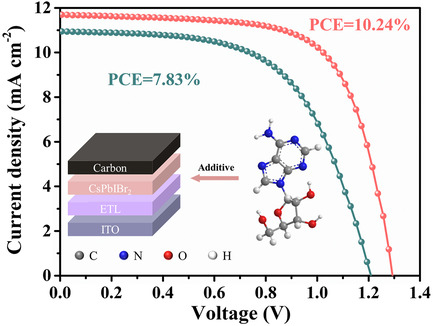
Biological small molecules as additives are added to the CsPbIBr2 films to passivate the defects. Compared with untreated CsPbIBr2 perovskite solar cells, the introduction of adenosine can improve the crystallization of CsPbIBr2 films, reduce the density of trap states, and enhance the light absorption, contributing to a champion efficiency of 10.24%.
Sustainable Recycling of Spent Ionic Liquid Dual-Ion Batteries
- First Published: 10 November 2022
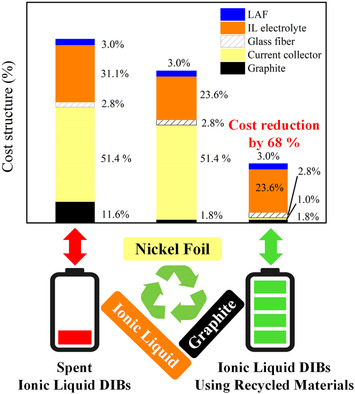
This work aims at the sustainable recycling of spent 1,2-dimethyl-3-propylimidazolium chloroaluminate ionic liquid dual-ion batteries (DIBs). Recovery rates of valuable components of graphite, nickel foil, and ionic liquid reach 84–98%, whereas the ionic liquid only achieves 24%. Optimistically, the cost of an ionic liquid DIB using recycled components could be reduced by around 68%.
Donor-π-Acceptor N-Methyl-4,5-Diazacarbazole Based Ultra-High Performance Organic Solar Cells: A Density Functional Theory Study
- First Published: 10 November 2022
A Novel Optimized Solar Trough Profile for Better Solar Energy Collection, Storage, and Levelized Cost
- First Published: 15 November 2022
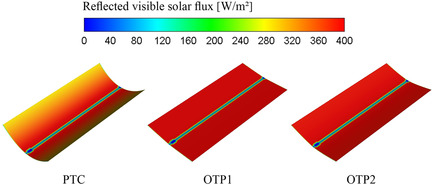
A multi-objective multidimensional optimization is implemented to obtain two optimum profiles. These profiles improve the overall efficiency by 8.3% and 7.1% under different operating conditions and incidence angles compared to a parabolic trough collector (PTC) with the same aperture area. The surface areas of these profiles are less than that of the PTC by 12.3% and 10.7%, respectively.
Annealing Rate as a Crucial Parameter Controlling the Photoelectrochemical Properties of AuCu Mosaic Core–Shell Nanoparticles
- First Published: 15 November 2022
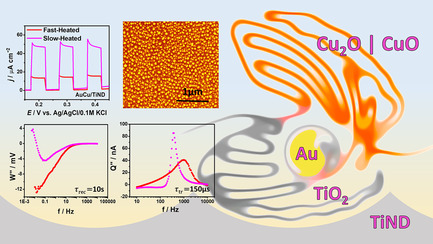
AuCu nanoparticles are fabricated by rapid thermal annealing of thin metallic films deposited on the nanostructured Ti platform. The different annealing times and heating rates have a significant impact on optical and photoelectrochemical properties. The fast-heated samples exhibit deeper midgap states, longer recombination rates, and higher carrier transport rates than the slow-heated electrodes.
Overcoming the Performance Limitation of Cs2AgBiBr6 Double Perovskites Using Bifacial Photovoltaic Design
- First Published: 15 November 2022
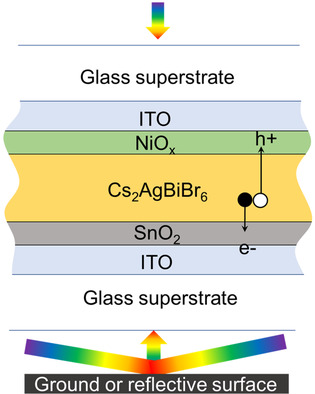
A bifacial photovoltaic design for Cs2AgBiBr6 double perovskites is proposed, which shows improved efficiency in numerical simulations compared to a standard configuration under conditions of asymmetric diffusion lengths between electrons and holes. The effects of diffusion length, asymmetric ratio, and albedo factor are discussed, and an assessment is made of the limiting factors to obtaining a photovoltaic efficiency above 8%.
Surface Amalgam on Magnesium Electrode: Protective Coating or Not?
- First Published: 27 November 2022
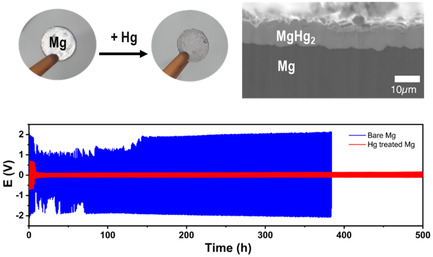
The amalgam process enables the formation of the surface layer mainly containing crystalline MgHg2 on the magnesium electrode. Enhanced magnesium plating/stripping is observed with magnesium bis(trifluoromethanesulfonyl)imide/dimethoxyethane electrolyte. The amalgam surface layer undergoes chemical and morphological changes upon cycling.
Effects of the Electrolyte Concentration on the Nature of the Solid Electrolyte Interphase of a Lithium Metal Electrode
- First Published: 18 November 2022
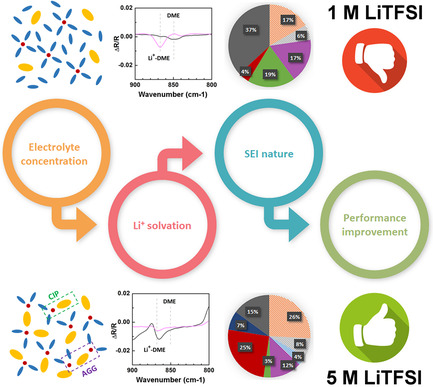
The beneficial role of the salt concentration for lithium metal anodes is studied by a combination of several complementary techniques: the better reversibility of the Li+ solvation in the 5 M lithium bis(trifluoromethanesulfonyl)imide (LiTFSI) in 1,2-dioxolane/1,3-dimethoxyethane in comparison with the corresponding 1 M electrolyte as well as the different nature of the solid electrolyte interphase (SEI) leads to better performance during plating/stripping of lithium metal.
Ni-MnO2/Graphene as Cathode Material for Super-Capacity Aqueous Rechargeable Zn-Ion Battery
- First Published: 18 November 2022
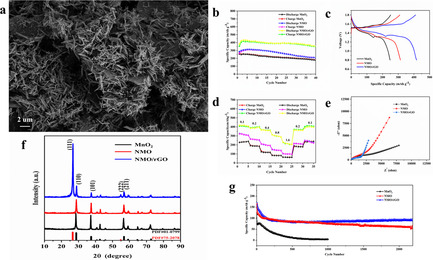
The insertion of Ni2+ into the crystal structure can affect the MnO bonding of MnO2 and a strong interaction between Ni2+-doped MnO2 and graphene nanocomposites can enhance the electrical conductivity and mitigate the volume expansion. The electrochemical performance of the composite materials is significantly improved.




